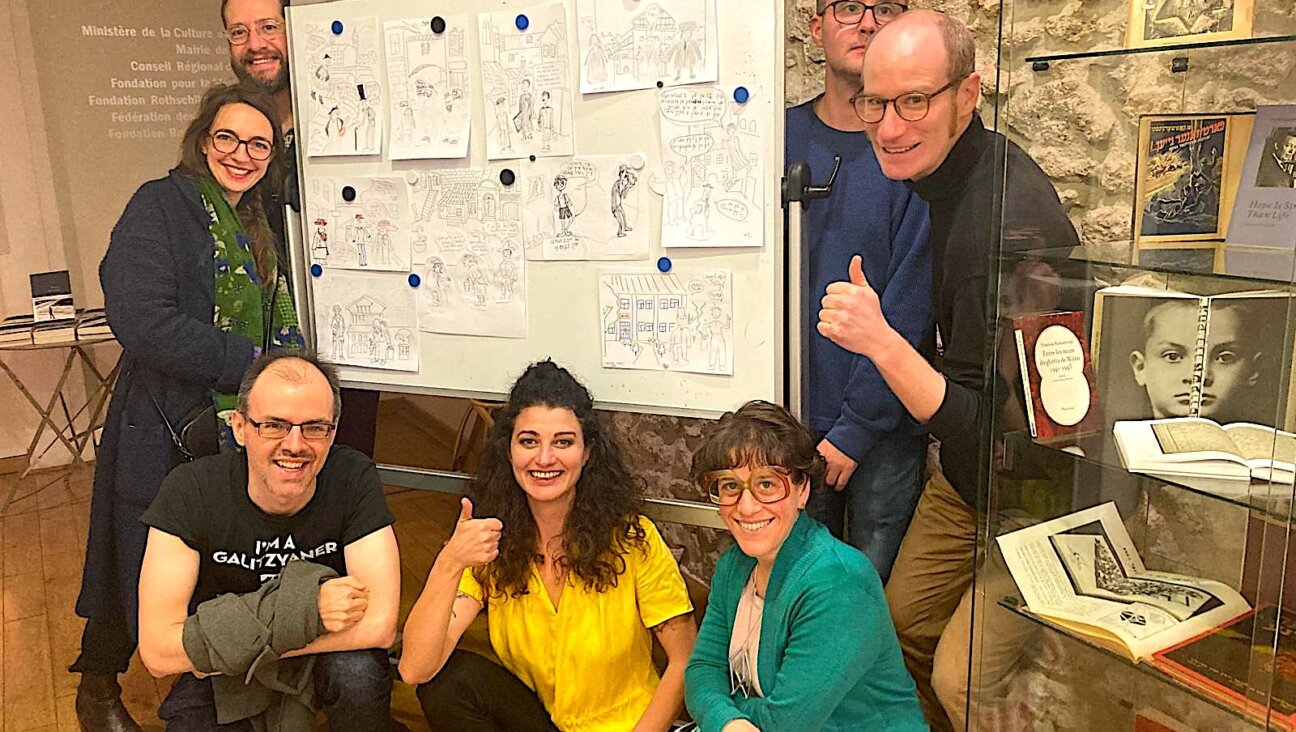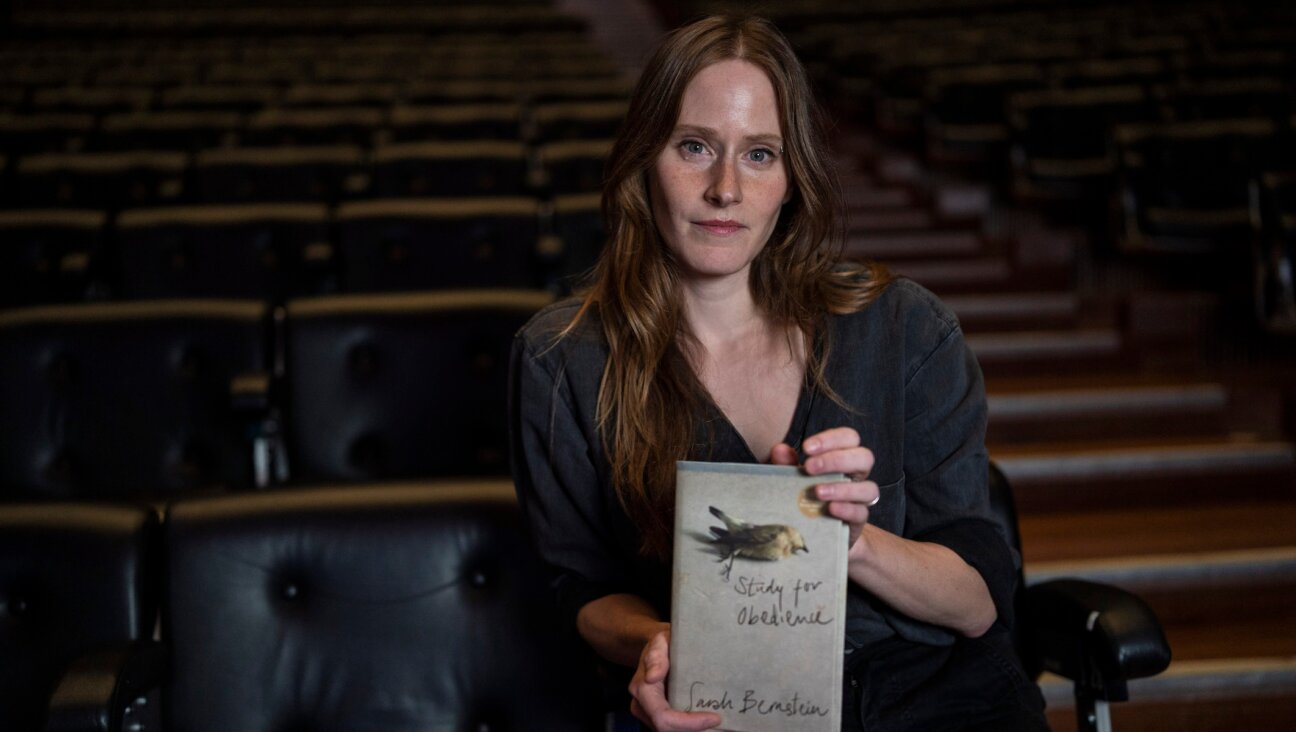Survivor Wins Holocaust Studies Ph.D. With Ground-breaking Study

Late Bloomer: Eliezer Schwartz, 81, receives his doctorate in July from the University of Haifa. Image by HAIFA UNIvERSITy
Like many Holocaust survivors, Eliezer Schwartz kept quiet for decades about his experiences carrying out forced labor for the Nazis.
Now, the Hiafa pensioner has not only started discussing them; he has authored ground-breaking academic research on the Nazis’ use of slaves that debunks the stereotyped image of German efficiency.
When the University of Haifa awarded him a doctorate in July, Schwartz, 81, became what is believed to be Israel’s oldest Ph.D. recipient. His doctoral research upholds the ruthless and cruel nature of the slave labor camps set up by the Nazis and their collaborators. But it challenges the received wisdom that the Nazis exploited their slave labor rationally or well.
“It’s ironic because they are known for having been efficient, but to make such mistakes as I identify in my dissertation is unbelievable,” Schwartz told the Forward.
An urban planner by profession, the Romanian-born Schwartz had no academic qualifications until he was 45, when he completed his undergraduate degree. He had no chance to enter higher education as a young man. At age 16 he was sent to Auschwitz. After liberation, at 19, he went back to his home town of Satu Mare, by then under Hungarian rule, and found that no family members had returned. He immigrated to Israel and had to find work to support himself, as well as complete army service. After finishing his military duty in the early 1950s he did odd jobs in various locations until 1960, when he settled in Haifa and started work as a surveyor for the construction firm Solel Boneh.
Later, Schwartz moved into urban planning, earning one of his two master’s degrees in that field. The other was in sociology and anthropology. During and after his studies, continued his work at Solel Boneh.
When Schwartz retired at 75, he decided to return to academia, once again, to find answers to unresolved questions from his past. In 1944, he was sent to Birkenau and, from there, sent as a forced laborer to a French iron mine, and then to a salt mine in Germany, before being moved to Dachau and eventually, on to Austria, where he was liberated in 1945. “I wanted to know some things I did not receive answers to from existing work, such as why the Nazis opened Birkenau,” he said.
Through documents from the Nazis and the companies that used their laborers that were made public at the Nuremberg Trials of Nazi war criminals, Schwartz began to trace a meticulous paper trail. “The advocates at the trials were not engineers and did not fully understand the papers, while coming to them with my background, I could take a different point of view,” he said.
Schwartz analyzed the planning processes used by the Nazis and their collaborators, and concluded that the most notorious Nazi camp, Birkenau (Auschwitz II), established in 1941, owed its very existence to inefficiency.
Earlier in 1941 the German chemical conglomerate IG Farben began building a large factory two miles away from Auschwitz I to produce synthetic oil and synthetic rubber for the war effort. Schwartz estimates that a facility of that size and specification could have been completed with 4,000 workers. Instead, many more were used, and early on in the project it became evident that Auschwitz I could not supply enough laborers to build it. “This is the main reason that [Heinrich] Himmler built Birkenau — so it could supply all the slaves that were needed,” said Schwartz.
Ultimately, the Nazis sent 41,000 slaves to work on the project. One reason the numbers were so high is that three in four died on the job. But, Schwartz found, this was not the only reason.
Papers show that the factory was meant to open in 1943. But when the Soviets arrived in 1945, it was still not finished, and only small areas of it were operating. Schwartz claims that the delays and the inflated manpower needs for construction both resulted from bad planning.
Many examples he cites are highly technical in scope, but some are surprisingly basic omissions. “When they began work they just did not check that the ground was fit for such a heavy building,” he said. As a result, thousands of slaves had to spend two years inserting 24,000 concrete blocks in the ground to stabilize the structure.
The planners also failed to check the level of the building against the nearby river before construction began. When they realized that the building was at risk of flooding they ordered 2.5 million cubic meters of soil, which slaves laid under the building. These two omissions took two-and-a-half years to overcome, Schwartz found.
Schwartz’s thesis, entitled “Forced Laborers in the Third Reich,” took him four years to write. Though computer literate, Schwartz wrote the paper in longhand. He explains that he did not feel confident writing such a large project using a word processor. He hopes that it will soon be published as a book.
Inevitably, some of the events and areas he was studying touched close to his personal experiences. But he says, “I worked on the dissertation as an outsider. I wrote as an academic, as if I’m not involved.” He added: “I made it quite cold.”
What his experiences did give him, he said, is a “source of information that no other historian has access to.” For example, in one section of the dissertation he wrote about the use of slaves in the adaptation of mines for underground industries — which was his work in France.
Like many Holocaust survivors, Schwartz hardly said a word about his wartime experiences for decades, until he was 65 and “everyone was beginning to talk,” he recalled. His dissertation represents a further, newfound openness to his past. But asked whether the exercise has helped him to deal emotionally with his past, he gives a curt response: “I’ve written the work and that’s that.”
Contact Nathan Jeffay at [email protected]
A message from our CEO & publisher Rachel Fishman Feddersen

I hope you appreciated this article. Before you go, I’d like to ask you to please support the Forward’s award-winning, nonprofit journalism during this critical time.
We’ve set a goal to raise $260,000 by December 31. That’s an ambitious goal, but one that will give us the resources we need to invest in the high quality news, opinion, analysis and cultural coverage that isn’t available anywhere else.
If you feel inspired to make an impact, now is the time to give something back. Join us as a member at your most generous level.
— Rachel Fishman Feddersen, Publisher and CEO






















